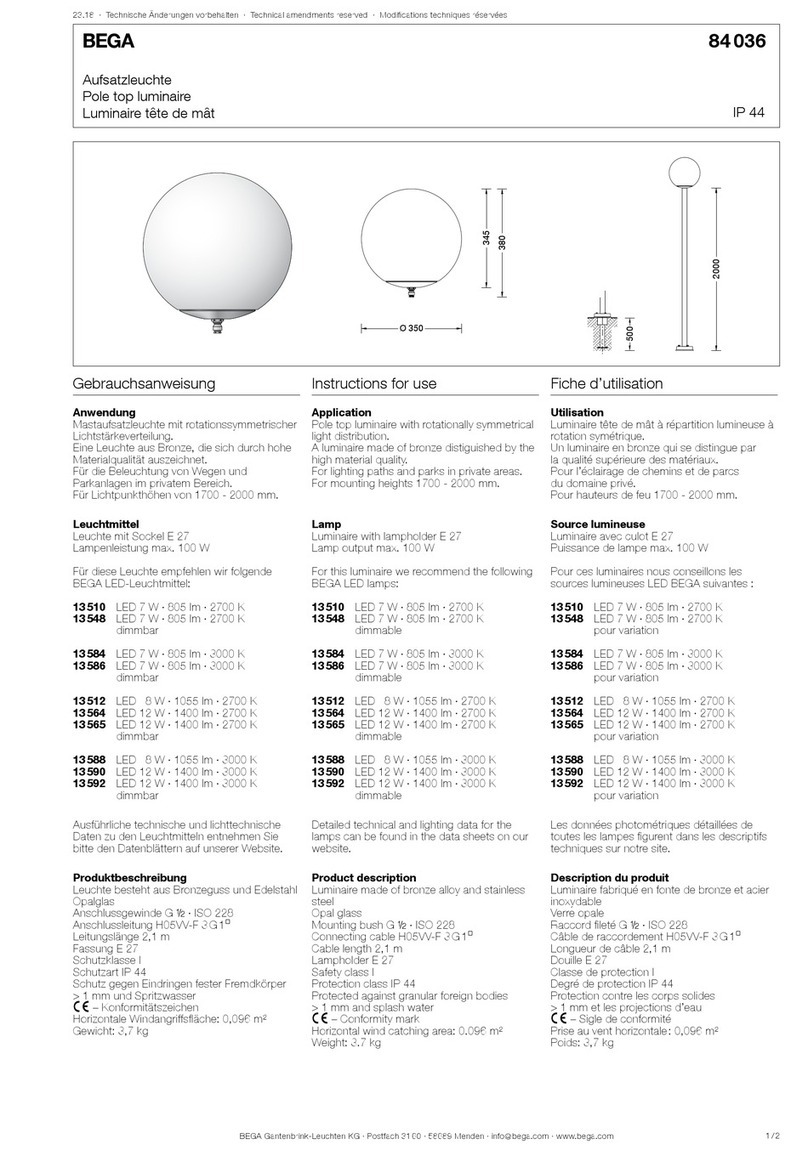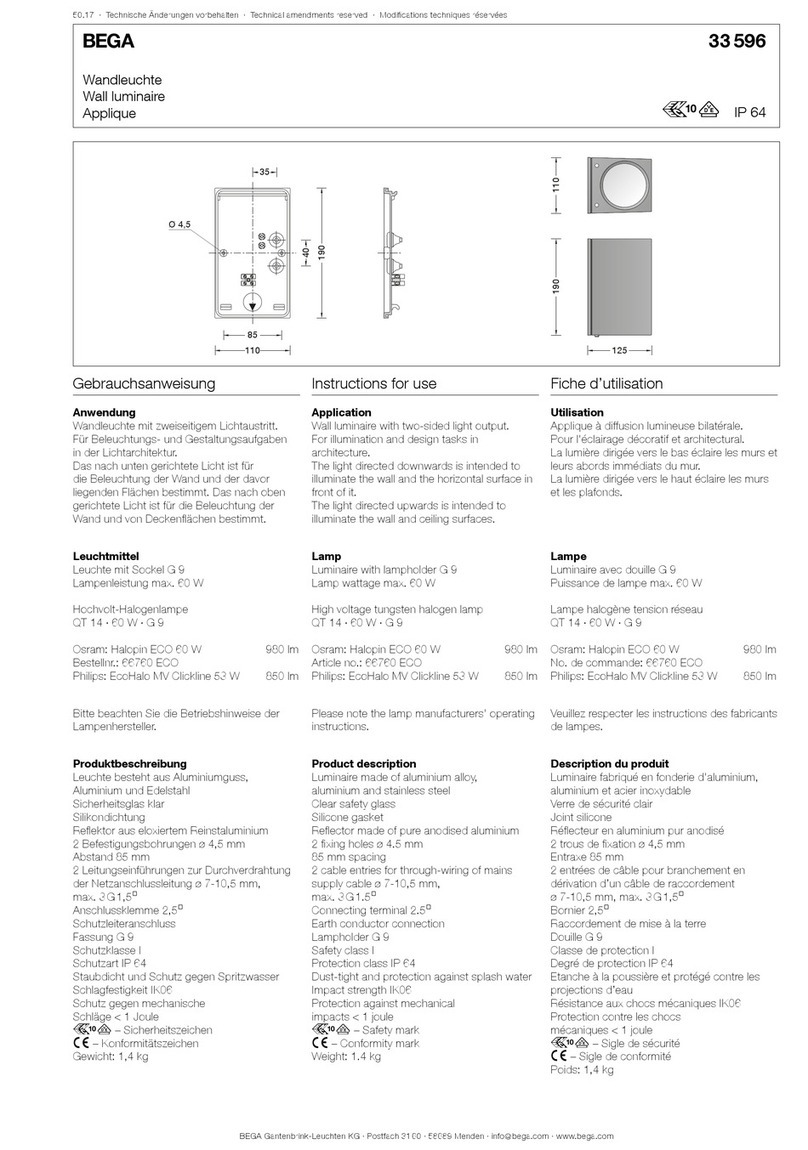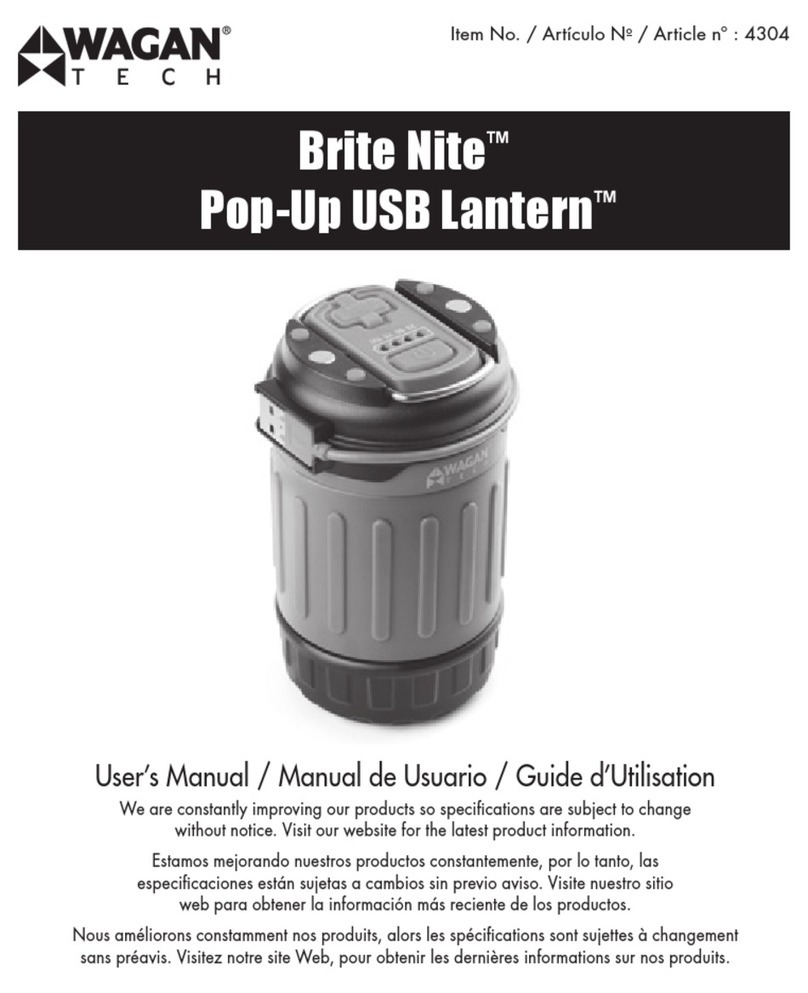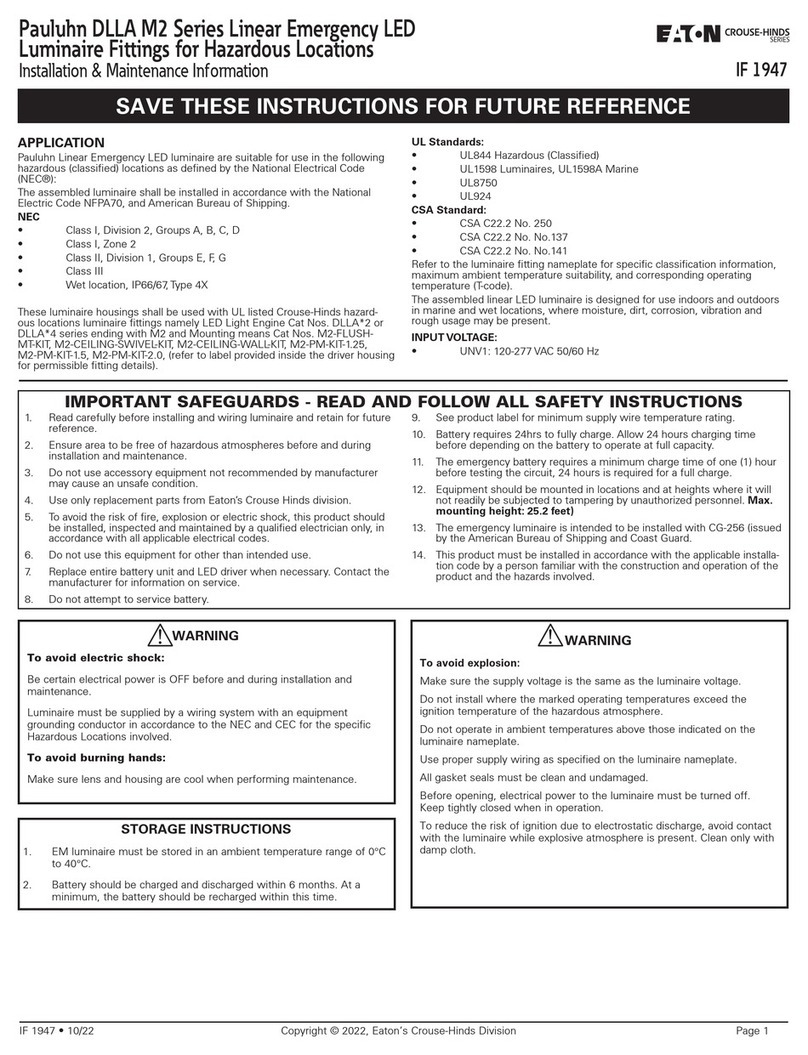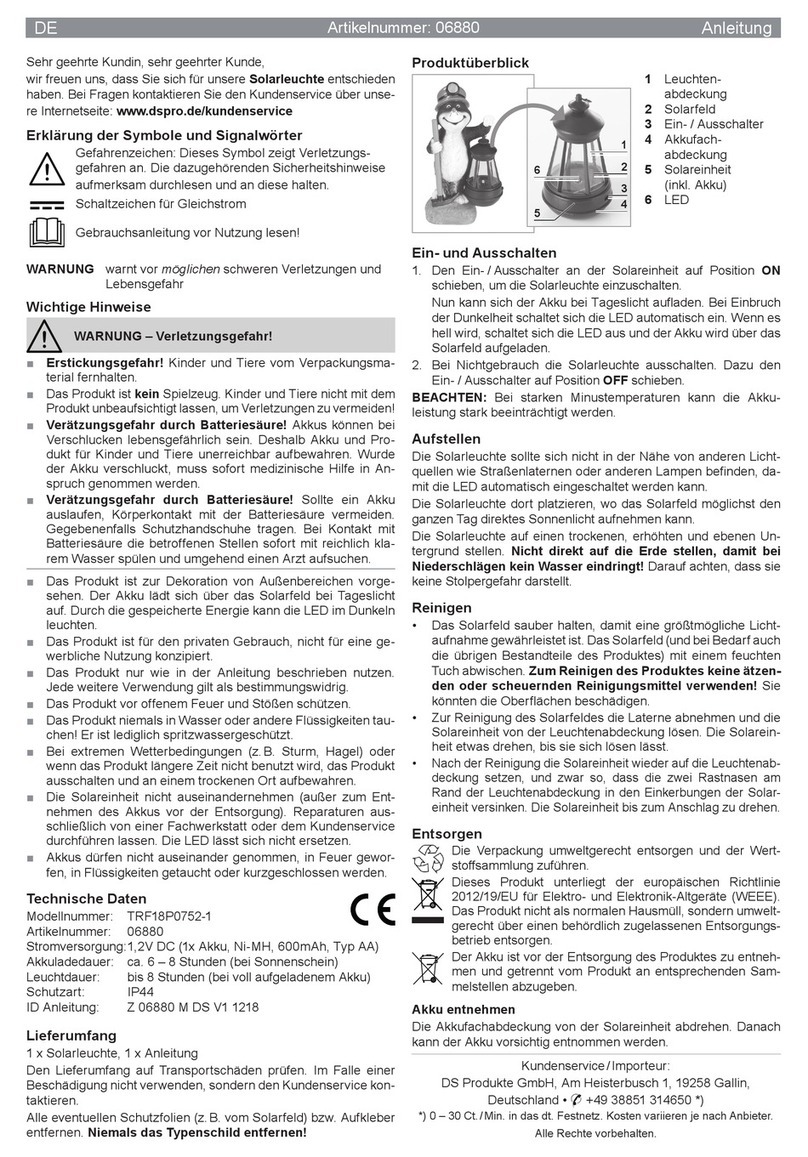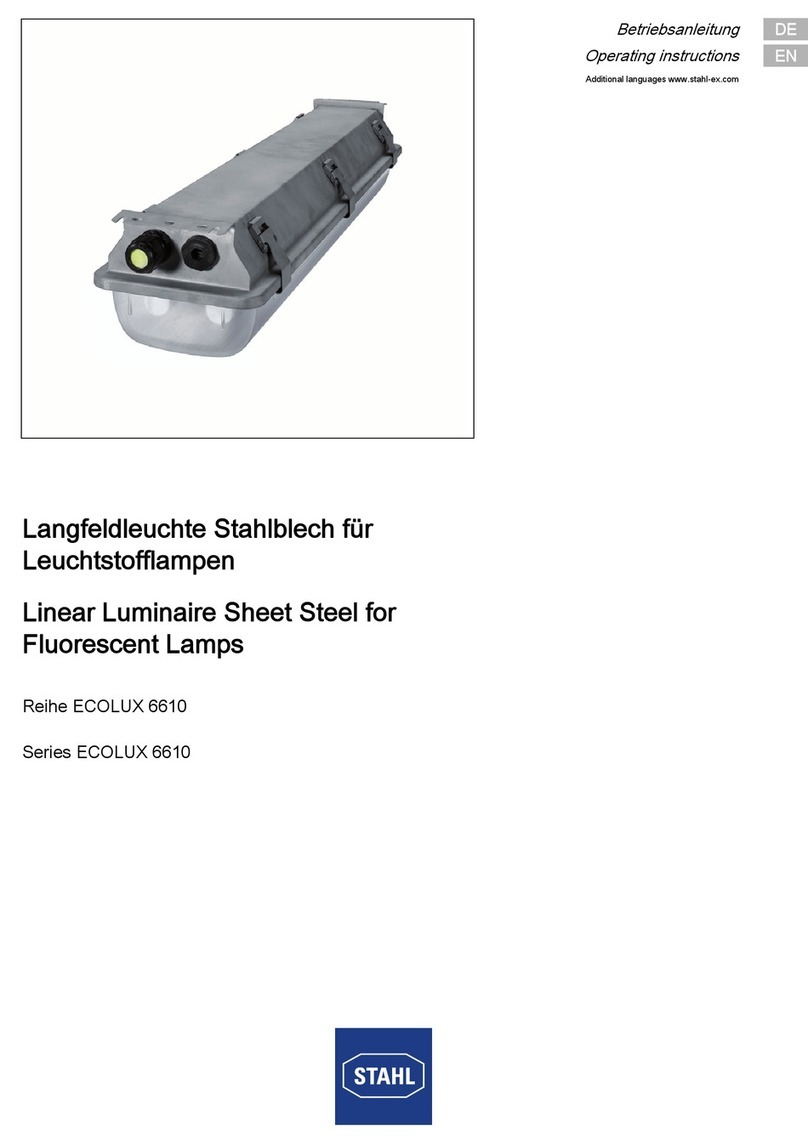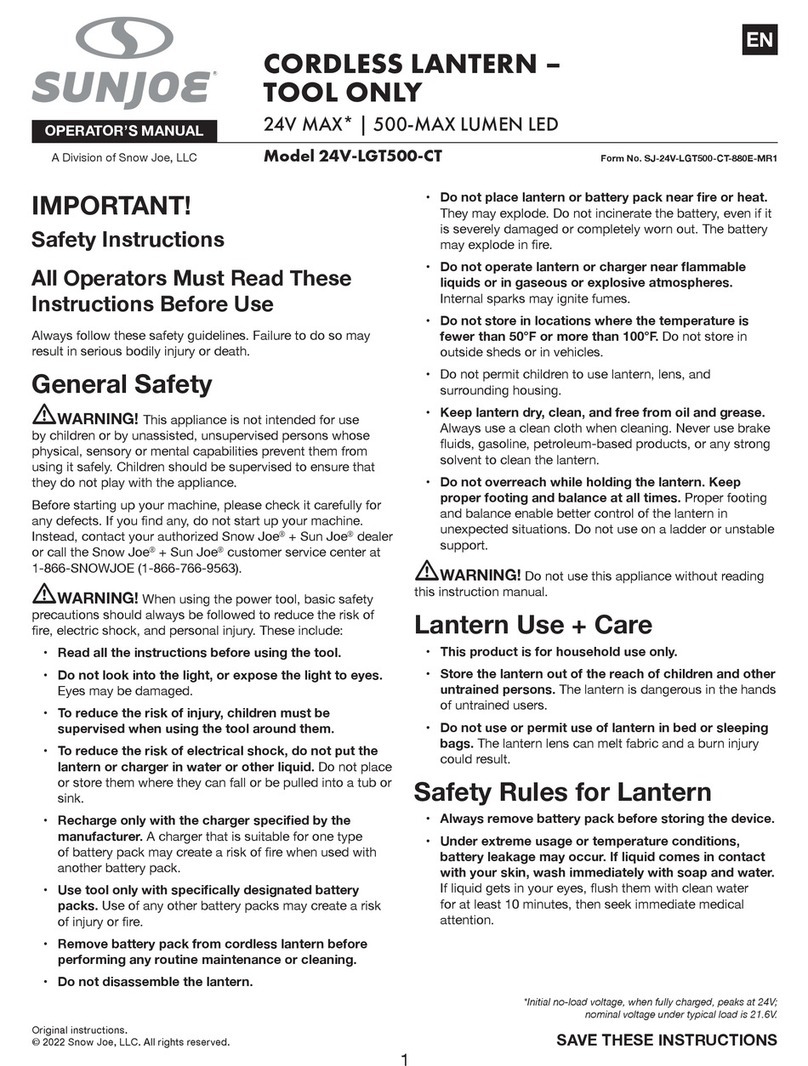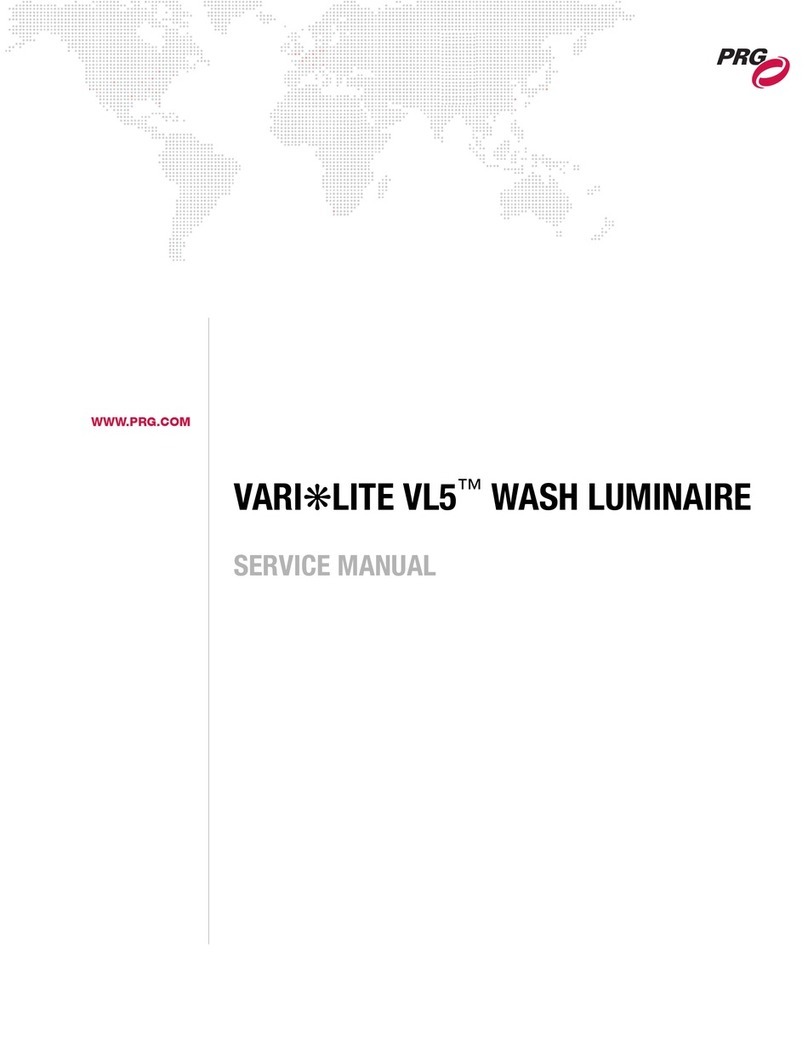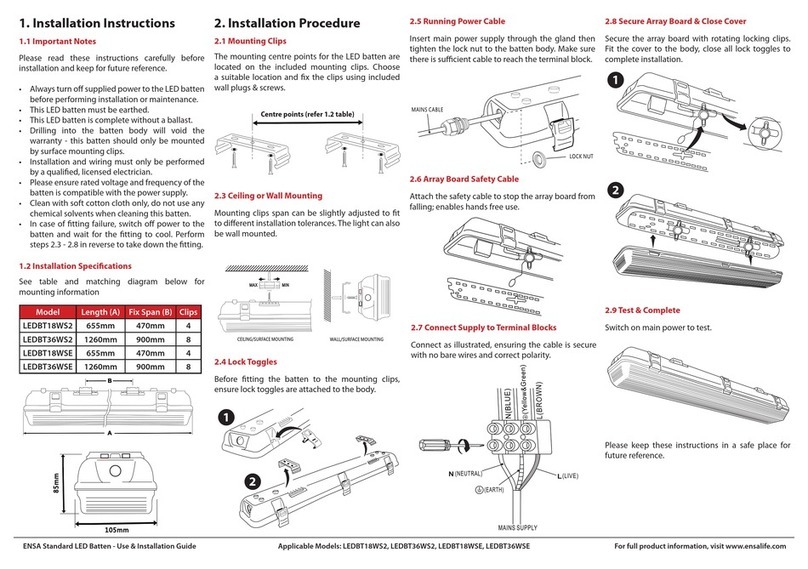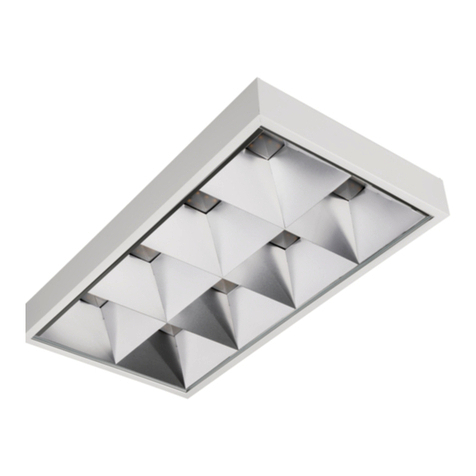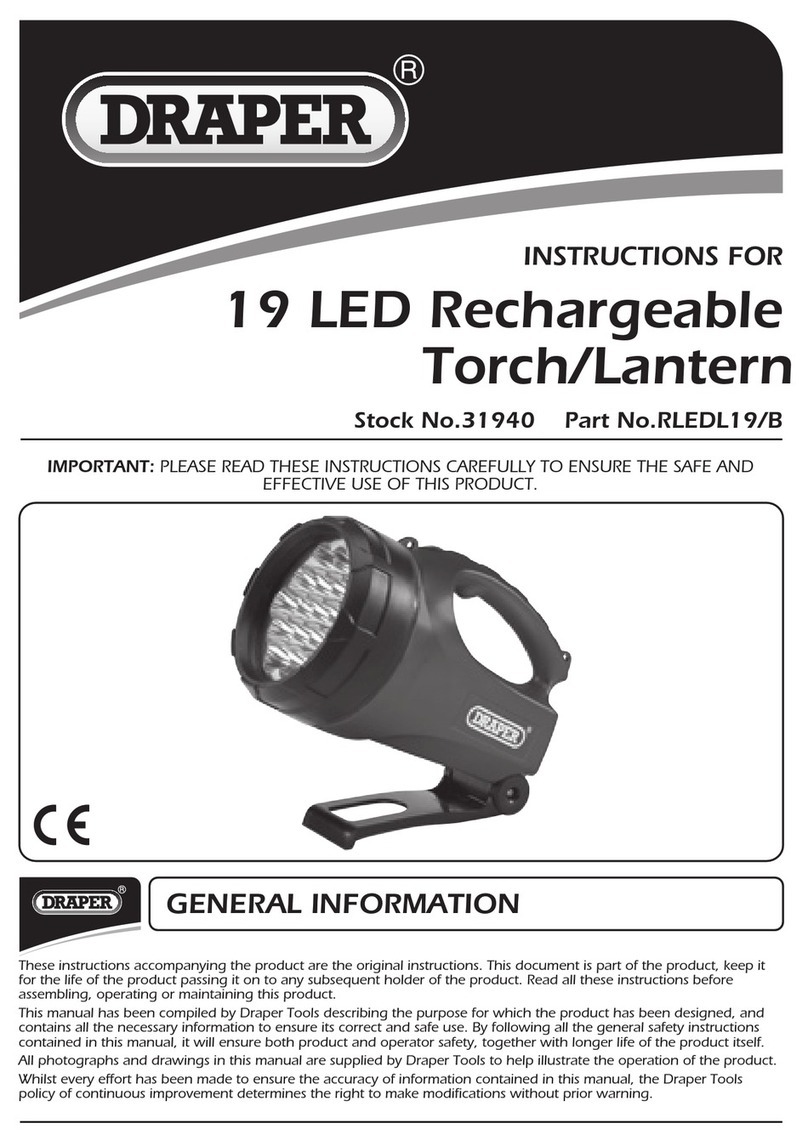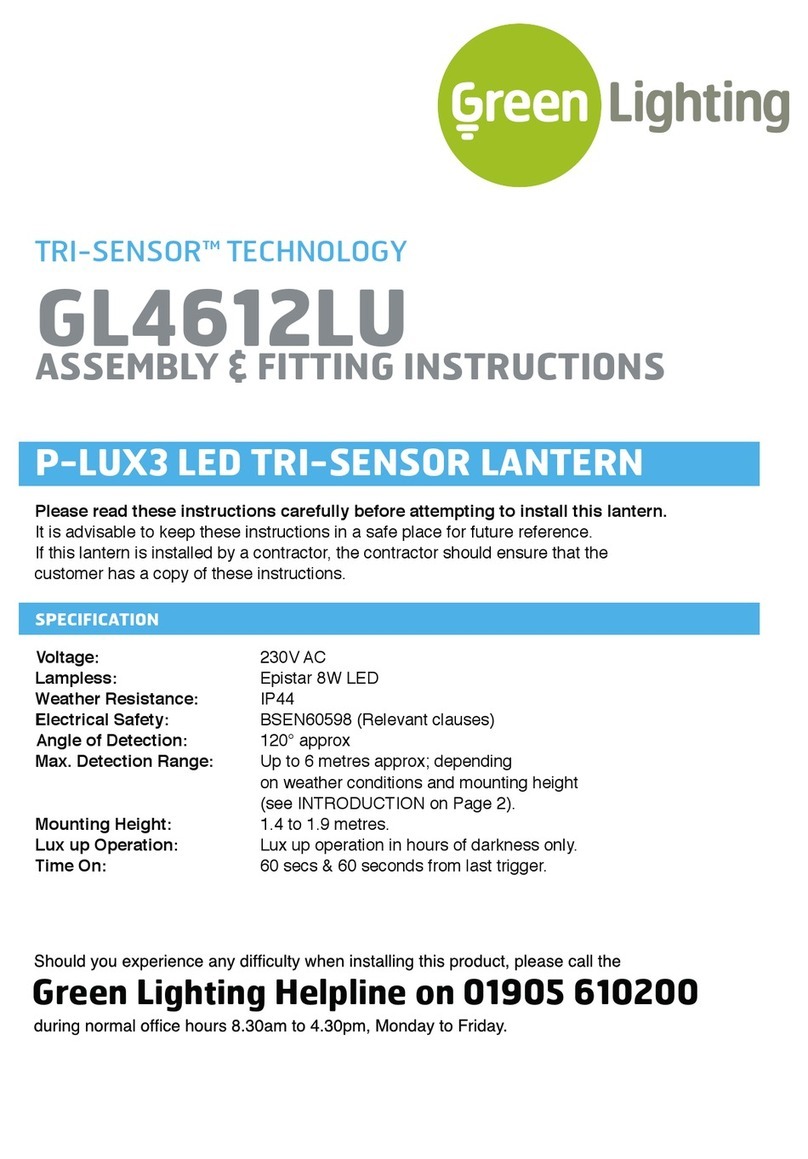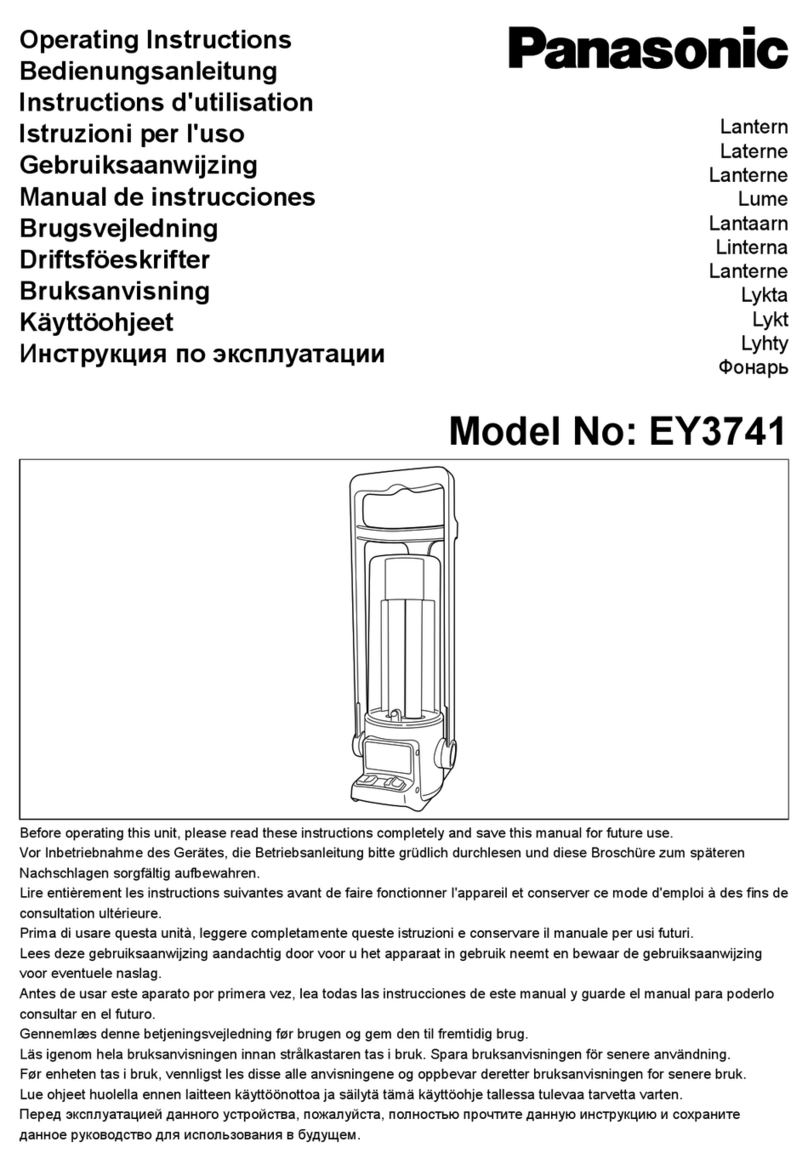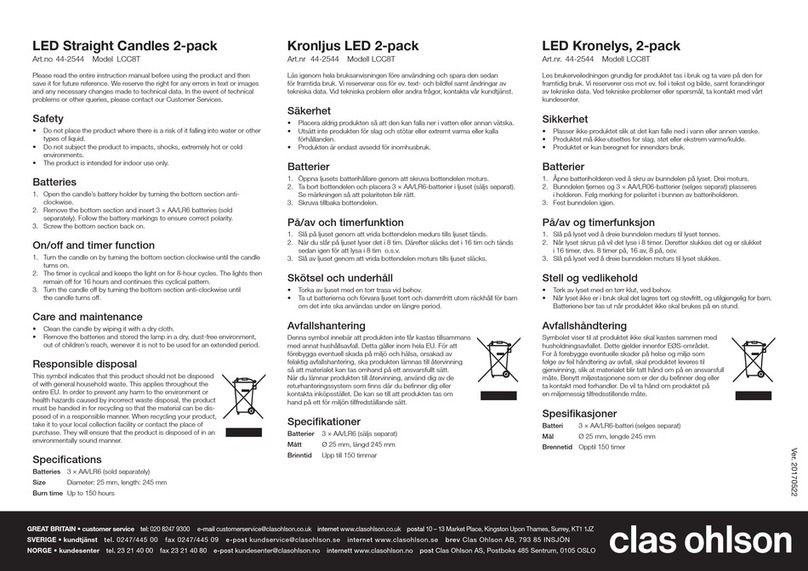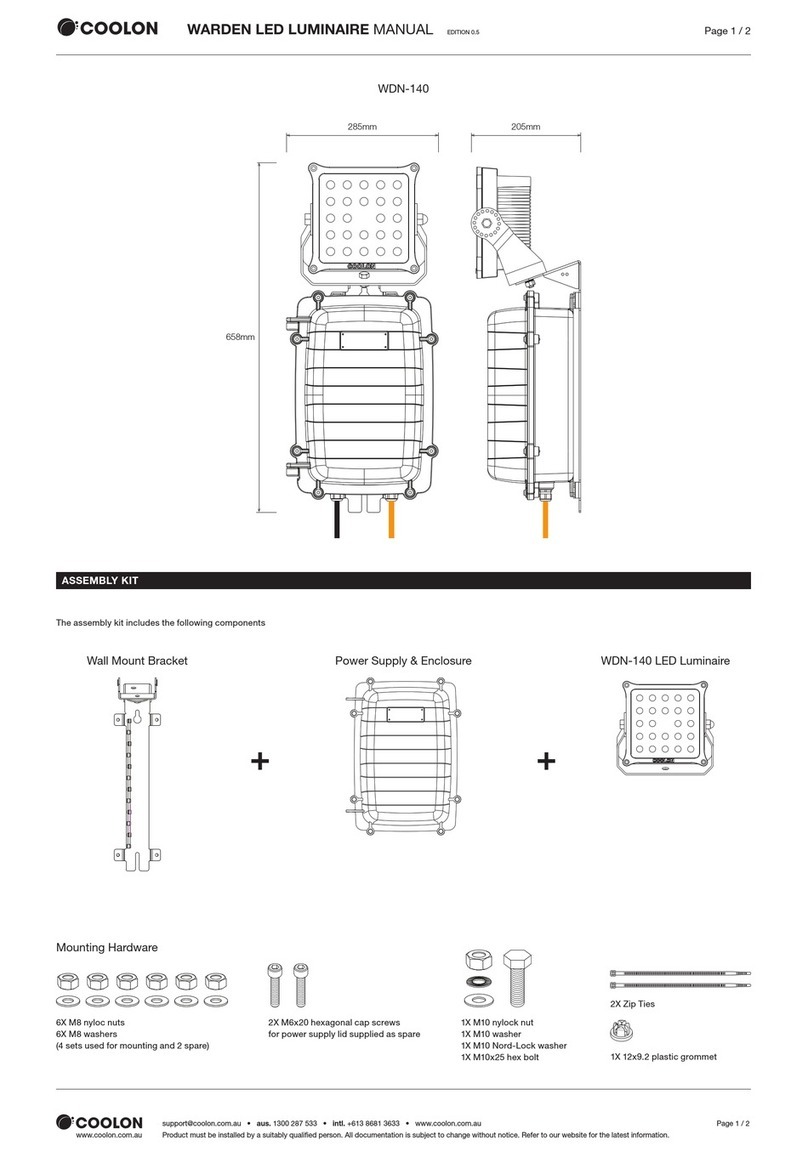
8
Controls
The control wheel adjusts the intensity or colour temperature of the light output. It is speed
sensitive, so it can be turned slowly for ne adjustments, or quickly for rapid changes.
It also is used to change other settings such as strobe frequency or dual ash level when using
these modes.
Normal Operation
Under normal operation the buttons have dedicated functions:
MENU - press to display menu
NEXT - press to select next setting to adjust (then use wheel to change)
ON/OFF - press to turn light on and o
FLASH - ashes light on or o when held down
Menu System
When in the menu, the buttons have the following functions:
Back - press to go back a menu level. Hold to return to main screen
Up - press to scroll up, or increase setting value. Hold to scroll quickly
Select - press to accept current menu item or setting
Down - press to scroll down, or decrease setting value. Hold to scroll quickly
Changing Colour Temperature
The colour can be changed by pressing the NEXT button until the COLOUR heading is dis-
played. The wheel can then be used to smoothly change through the available colour tempera-
ture range. The display indicates approximate colour temperature, in Kelvin.
There are two modes for colour mixing:
Normal - As the colour mix is altered, brightness remains constant
Boost Brightness - Allows for maximum brightness, however output level will not
remain constant when changing colour mix
Boost Brightness mode can be enabled by selecting it in the Main Menu screen.

